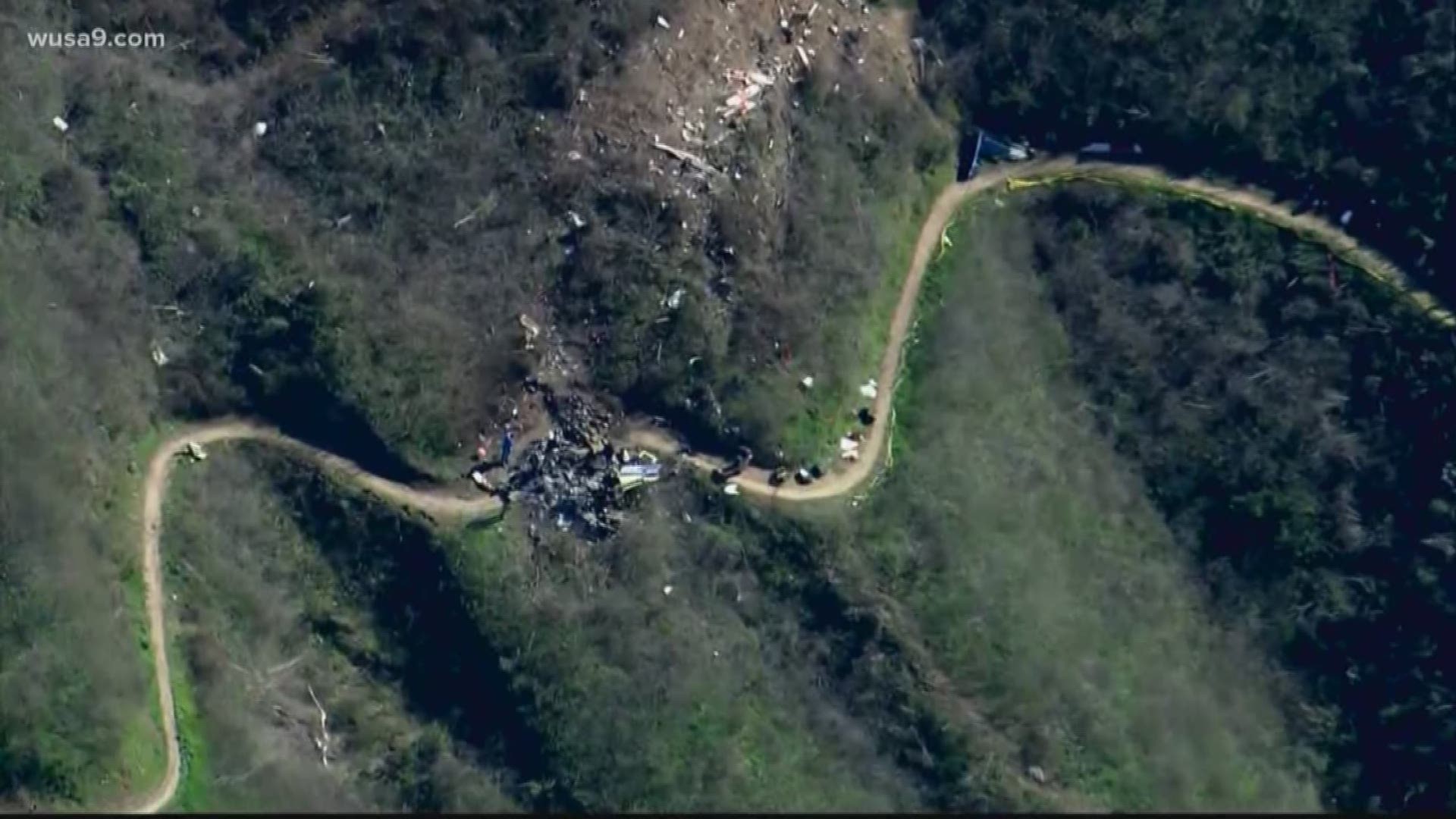WASHINGTON — The outcome of the helicopter crash that killed basketball legend Kobe Bryant, his daughter, and seven others could have been much different if the ill-fated craft was equipped with ground-sensing equipment, aviation experts told WUSA9.
National Transportation Safety Board investigators said the Sikorsky S-76B helicopter that crashed into a foggy Southern California mountainside was not equipped with a Terrain Awareness and Warning System, known as TAWS. The system can display a visual map of the surrounding terrain to pilots as well as give audible “pull up” warnings when it senses an impending crash.
Former NTSB investigator Charley Pereira told WUSA9 that following the 2004 crash of a similar helicopter, the agency asked federal regulators to mandate TAWS on turbine-powered helicopters carrying six passengers or more, but the FAA did not implement any change.
"This is a case where bureaucracy led to several deaths,” said Pereira. “We don’t have all the facts yet, but TAWS more than likely would have helped prevent this accident," he said.
The FAA required commercial airlines to use TAWS starting in 1974. Regulators later expanded the mandate to include smaller jet aircraft. In 2006, the NTSB asked that TAWS be required on helicopters like Bryant’s after a Sikorsky S-76 plunged into the Gulf of Mexico at night, killing ten.
"If a TAWS had been installed aboard the accident helicopter, the system’s aural and visual warnings should have provided the flight crew with ample time to recognize that the helicopter was descending toward the water, initiate the necessary corrective actions, and recover from the descent," said the report.
Pereira said the NTSB closed that recommendation in 2014 but should have lobbied harder. Now that Bryant has been killed, he says the NTSB should resume the push for TAWS in helicopters. He said if the FAA does not make a change, safety investigators should reach out directly to those flying on unequipped helicopters he calls unsafe.
"If Kobe had known $50,000 and another couple hundred bucks an hour for another pilot would have helped save him and his daughter’s life, I’m sure he would have spent that money," Pereira said.

